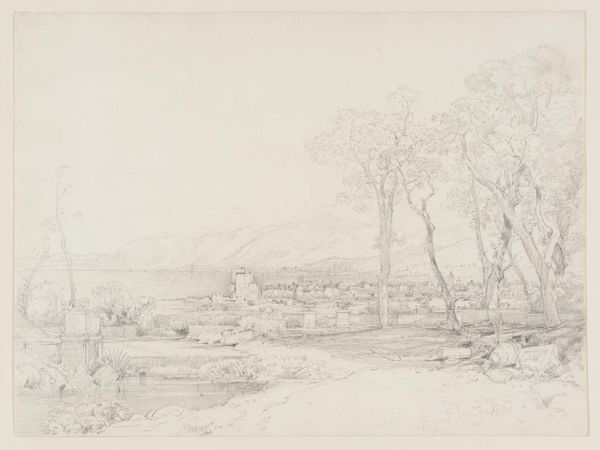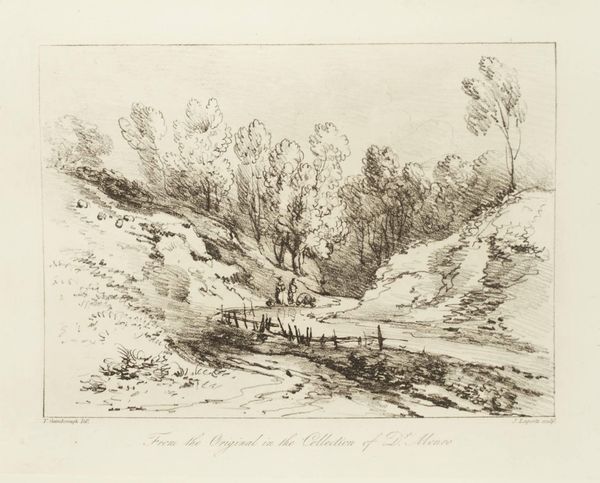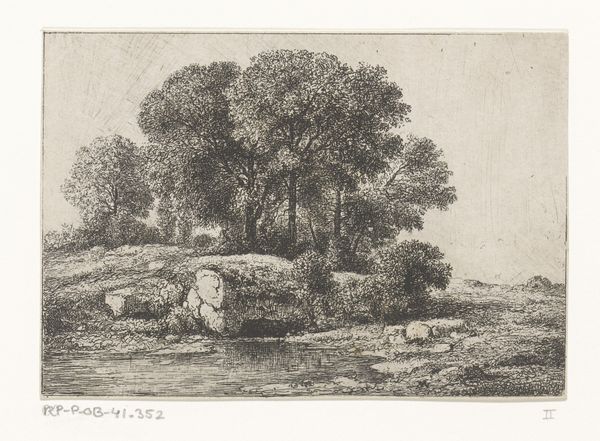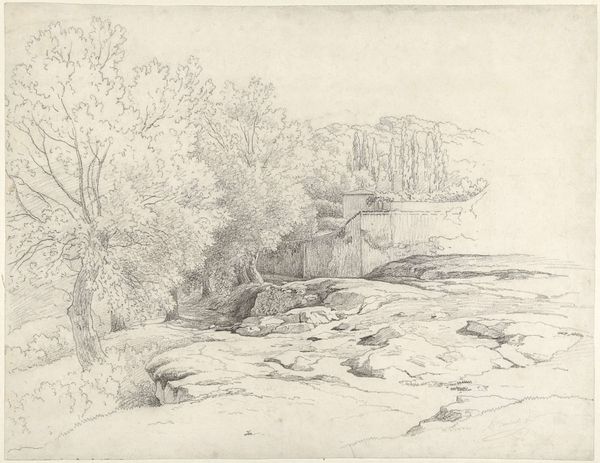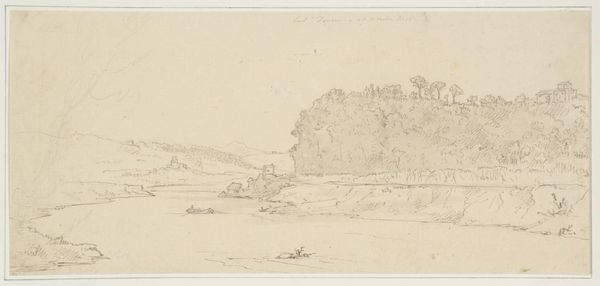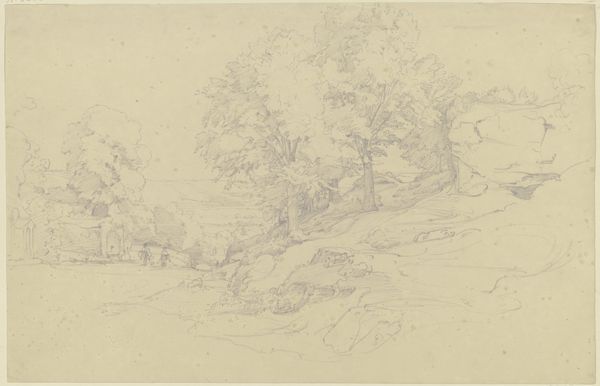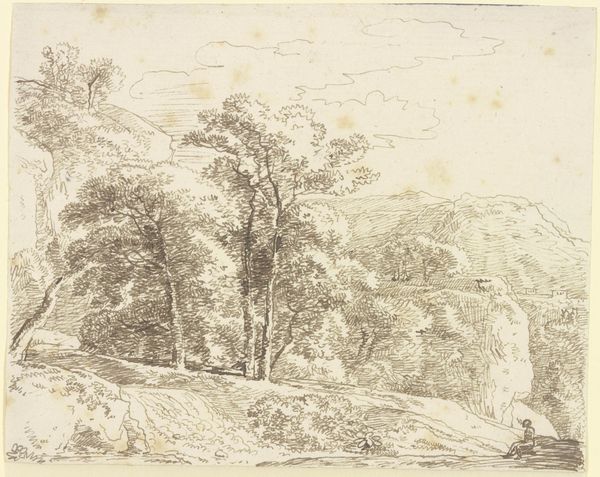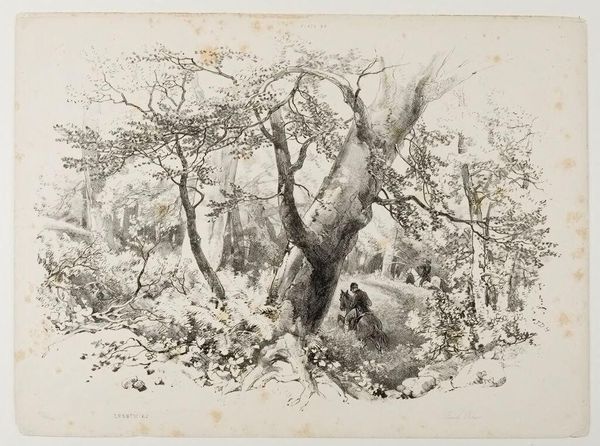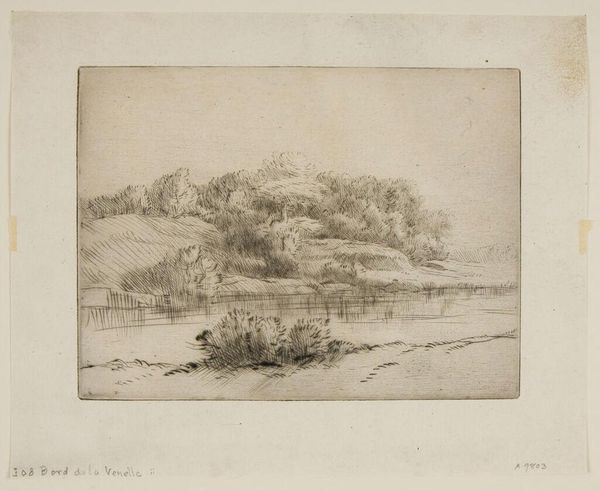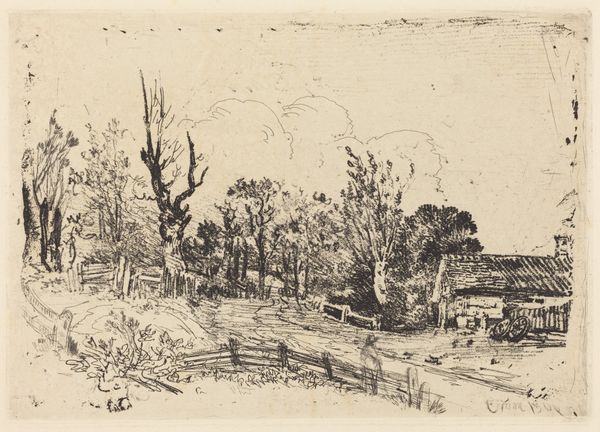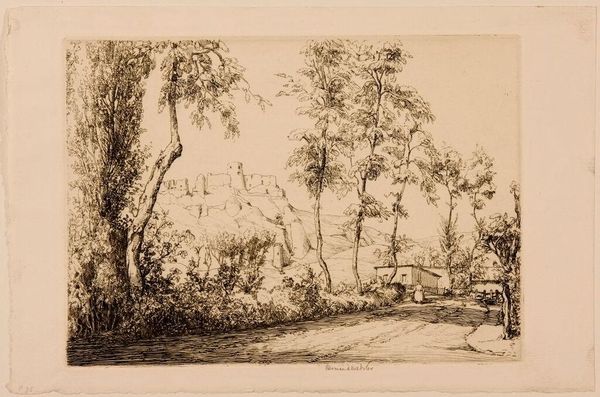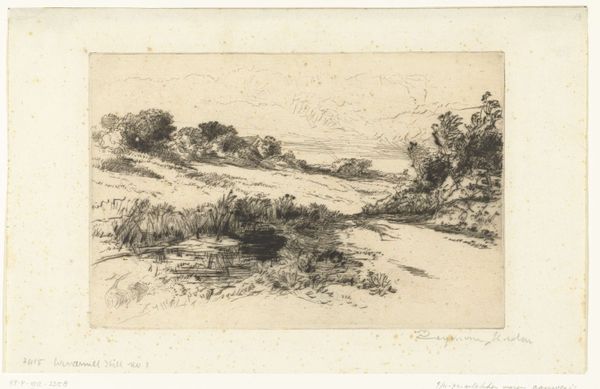
Dimensions: support: 220 x 275 mm
Copyright: CC-BY-NC-ND 4.0 DEED, Photo: Tate
Curator: This is James Duffield Harding's "Old Kiln, Hewetts Brickyard, Leamington", a graphite drawing held here at the Tate. Editor: A rather melancholy scene, isn't it? The soft pencil strokes create such a delicate, almost mournful atmosphere. Curator: Harding's draftsmanship is indeed striking. The careful cross-hatching defines the cylindrical form of the kiln, while the surrounding landscape is rendered with a lighter touch. Note how the receding planes lead the eye deeper into the composition. Editor: It feels like a stage set, doesn't it? The kiln, the forlorn cow, the lone figure... all carefully placed. The diagonal lines add a certain dynamism that's quite compelling. Curator: Harding's interest in topographical accuracy is evident, yet he also imbues the scene with a sense of transience, a quiet contemplation on the impermanence of industry and the passage of time. Editor: A lovely piece, really. Its simplicity is its strength. Curator: Agreed. It offers a glimpse into a bygone era, rendered with both precision and feeling.
Comments
tate 3 months ago
⋮
http://www.tate.org.uk/art/artworks/harding-old-kiln-hewetts-brickyard-leamington-t09446
Join the conversation
Join millions of artists and users on Artera today and experience the ultimate creative platform.
tate 3 months ago
⋮
Harding was an enthusiastic teacher of pencil drawing, and wrote a manual describing the many ways in which graphite could be used. He valued the greater freedom which graphite allowed, since its marks could be easily erased, whereas ink marks were permanent. This sketch demonstrates Harding's mastery of the pencil as he changes swiftly from shade to outline, thin to thick strokes, and dark to light tones. The horizontal 'laid' lines in the paper, which are formed during the papermaking process, help to create a sense of the brick work of the kiln, an effect that Harding may have used deliberately. Gallery label, August 2004
